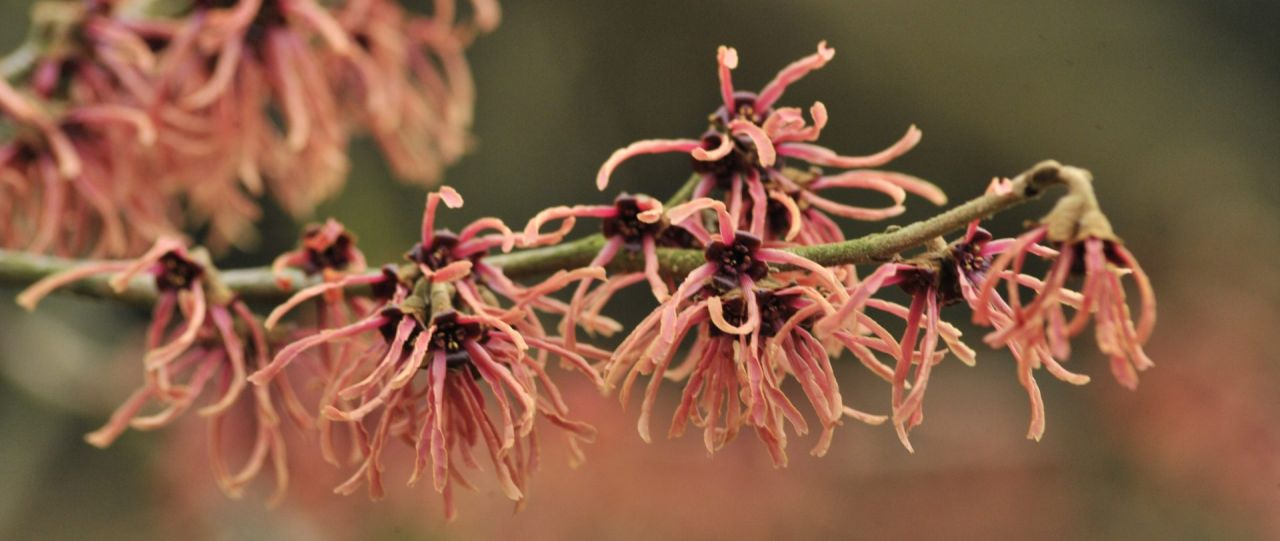In nature
Five botanical varieties
Scientists distinguish at least five different varieties of Hamamelis which are extremely similar. They make this distinction based on origin, manner of growth, habitat preference, flowering period, and other small but still clear differences. From the United States we have Hamamelis ovalis, H. virginiana and H. vernalis, from China there is H. mollis and from Japan H. japonica.
They are all shrubs and small trees from mixed woodland vegetation. They benefit from the light falling in open spaces, the edges of forests, and river beds. They all have the typical alternating petals. Hamamelis virginiana blooms in the autumn at the same time as the leaves change colour. In our climate, the other varieties bloom during the winter months: from the end of December to mid-March.
In nature, they almost all bear yellow flowers. Only in the case of Hamamelis japonica and H. vernalis can we sometimes see light reddish-tinged flowers.
Witch hazel belongs to the Hamamelidaceae family, which was named after them. The distribution of the family is irregular in the moderate and subtropical areas of both the northern and southern hemispheres. The family contains approximately 100 species in 23 genera.
Hybrid Hamamelis x intermedia
The hybrids are the most suitable for our gardens. The best ones stem from crosses between the Asian varieties Hamamelis mollis and H. japonica.
In 1954, this hybrid was described for the first time as Hamamelis x intermedia. This was in the Arnold Arboretum in the United States, which then presented the "Arnold Promise" cultivar. However, crosses between Hamamelis mollis and H. japonica had existed long before this in Europe. In the beginning of the 1950s the cultivar "Nina" was produced in Denmark, and from the end of the 1930s various selections were introduced by Arboretum Kalmthout, including the first red-flowering examples: Hamamelis x intermedia "Ruby Glow".

